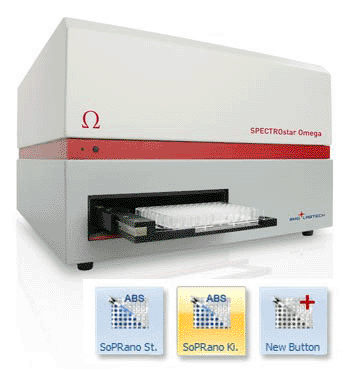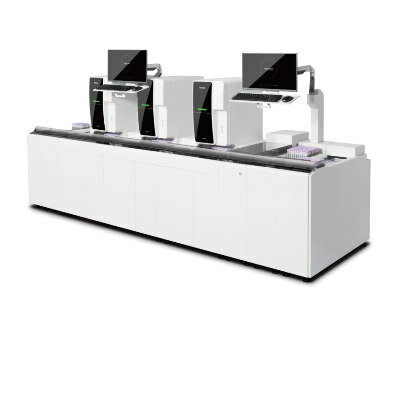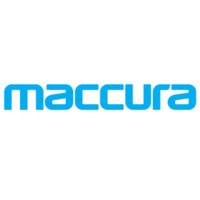Novel Label-Free Protein Assay System Certified Compatible with CCD Spectrometer Microplate Readers
By LabMedica International staff writers
Posted on 08 Aug 2012
Several instruments manufactured by one of Europe's leading producers of microplate spectrophotometers have been certified as to being completely compatible with a novel, label-free protein assay system.Posted on 08 Aug 2012
SPECTROstar Nano, SPECTROstar Omega, FLUOstar Omega, POLARstar Omega, and PHERAstar FS are microplate readers equipped with CCD (charge-coupled device) spectrometers. These instruments, made by the dedicated manufacturer of microplate readers BMG Labtech (Ortenberg,Germany) have been certified as being fully compatible with PharmaDiagnostics' (Zellik, Belgium) SoPRano assay system.

Image: The SPECTROstar Omega microplate reader is fully compatible with the SoPRano assay system (Photo courtesy of BMG Labtech / PharmaDiagnostics).
The SoPRano assay is based on an adaptation of surface plasmon resonance (SPR) technology known as localized surface plasmon resonance (LSPR). In this system, gold nano rods (GNR) in solution are coated with the protein of interest. When the target protein molecules attached to the surface of the GNR’s interact with a ligand, a highly reproducible and dose dependent absorbance change occurs, which manifests as a redshift in the maximum absorbance wavelength. This is measured on a standard absorbance plate reader in either 96- or 384-well format.
The SoPRano assay system does not require specialized SPR detection equipment. Instead, a standard liquid handler and UV-Vis plate reader (scanning) capable of signal measurement up to 1000 nm are all that are needed.
This technology is broadly enabling and has been adapted for a variety of applications in basic research, pharmaceutical discovery, and quality control. Current applications include real-time kinetics, antibody-antigen interactions, epitope mapping; protein-protein interaction assays, and small molecule protein-protein inhibition assays.
Dr. E. J. Dell, international marketing director at BMG Labtech, said, “Since the whole absorbance spectrum redshifts when molecules bind to the SoPRano GNR surface, a whole spectrum needs to be measured. In less than one second per well and at a resolution of one nanometer, our CCD spectrometer microplate readers can instantly capture an entire absorbance spectrum (220-1,000 nm). Other microplate readers have to ‘build’ the spectrum, this can take tens of seconds (or even minutes) and it is usually at a lower resolution. This makes BMG Labtech’s CCD spectrometer microplate readers perfect for the SoPRano label-free assay.”
“The BMG Labtech spectrometer technology and dedicated SoPRano software enhance data quality and ease of use for SoPRano users. The combination of the BMG Labtech readers and SoPRano technology now deliver label-free, high quality protein-protein interactions analysis at a cost level an order of magnitude lower than specialist SPR systems, making this valuable technique available to any life science lab”, said Julian Abery, vice president for business development at PharmaDiagnostics.
Related Links:
BMG Labtech














